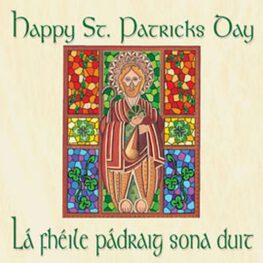Many greetings for Saint Patrick’s Day
sends Captain’s Handbook © to the Irish island

Who was St. Patrick?
St. Patrick was born Maewyn Succat but changed his name to Patricius (or Patrick), which comes from the Latin term for ‚father figure‘ following his decision to become a priest.
The celebrations on March 17 first began back in 1631, when the Church created a Feast Day in homage to St. Patrick. Having been the Patron Saint of Ireland, he died around the fifth century, which means that his passing came 12 centuries prior to the modern version of the holiday first being observed.
„We know that he was a Roman citizen, because Britain was Roman then, and then he was enslaved and taken to Ireland, where he either escaped or was released,“ said Marion Casey, a clinical assistant professor of Irish Studies at New York University.
„And then he became a priest and went back to Ireland, where he had a lot of luck converting the Druid culture into Christians.“
The church associated a botanical item with St. Patrick, which is customary for all saints, as he was assigned him the symbol of the lucky shamrock.
The first New York City parade took place in 1762, and after the Irish Rebellion in 1798 the colour green became linked to the St. Patrick’s Day festivities.

Wer war St. Patrick?
Der heilige Patrick wurde als Maewyn Succat geboren, änderte aber seinen Namen in Patricius (oder Patrick), was vom lateinischen Begriff für „Vaterfigur“ abgeleitet ist, nachdem er beschlossen hatte, Priester zu werden.
Die Feierlichkeiten am 17. März begannen im Jahr 1631, als die Kirche einen Festtag zu Ehren von St. Patrick einführte. Er war der Schutzpatron Irlands und starb um das fünfte Jahrhundert, was bedeutet, dass sein Tod 12 Jahrhunderte vor der modernen Version des Feiertags liegt.
„Wir wissen, dass er ein römischer Bürger war, weil Britannien damals römisch war, und dann wurde er versklavt und nach Irland gebracht, wo er entweder entkam oder freigelassen wurde“, sagte Marion Casey, eine klinische Assistenzprofessorin für Irische Studien an der New York University.
„Dann wurde er Priester und kehrte nach Irland zurück, wo er viel Glück hatte, die Druidenkultur zum Christentum zu bekehren.
Die Kirche verband einen botanischen Gegenstand mit St. Patrick, wie es bei allen Heiligen üblich ist, da ihm das Symbol des glückbringenden Kleeblatts zugewiesen wurde.
Die erste Parade in New York City fand 1762 statt, und nach dem irischen Aufstand von 1798 wurde die Farbe Grün mit den Feierlichkeiten zum St. Patrick’s Day verbunden.
